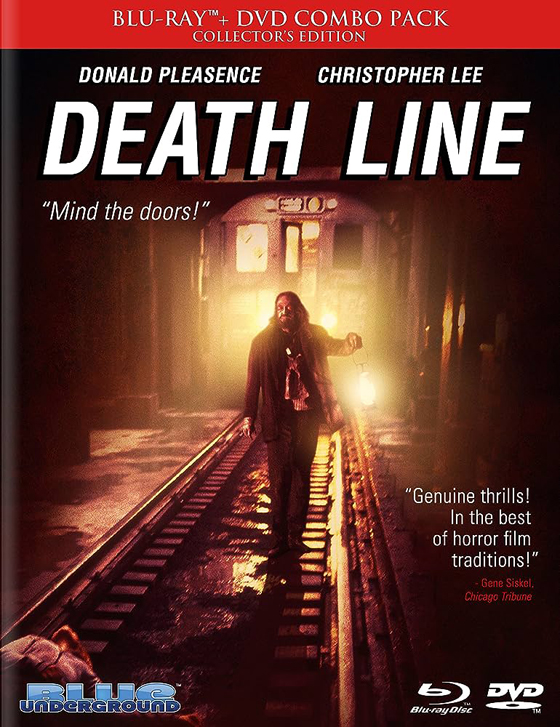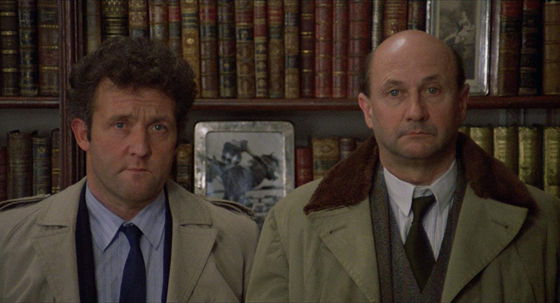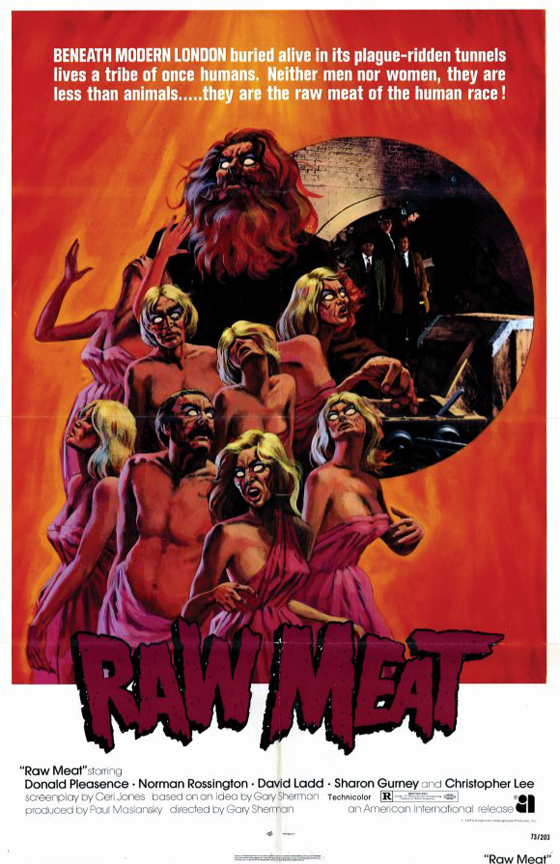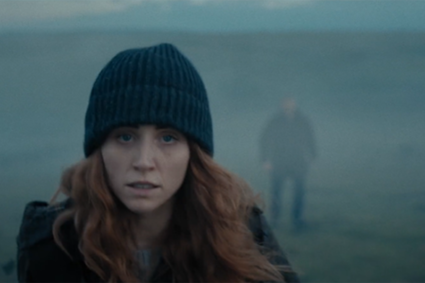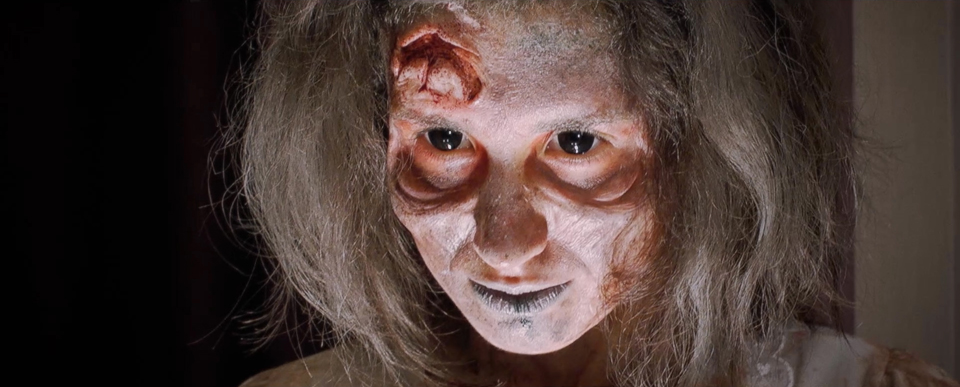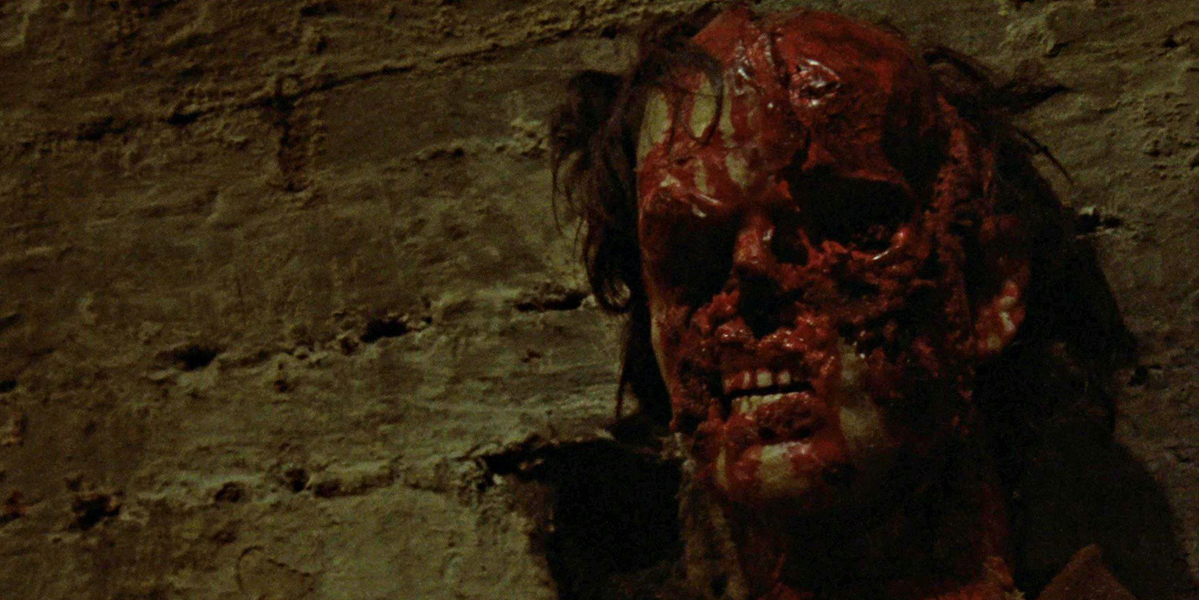
Subways and other underground travel systems have always evoked an element of fear. In addition to being many feet underground, there’s always a worry that you might get jumped by a criminal or a mentally disturbed tunnel dweller. Or maybe even swarmed by a horde of rats. Such fears are rarely justified, but there’s always that nagging voice in the back of your mind saying, “What if?”
Over the years, a number of films have used the dread of subways as the basis for thrillers. C.H.U.D. comes to mind. But no movie ever capitalized on such fears as much as a 1972 British film originally titled Death Line. That was the name it was known by in Britain. But in America, its name was changed to the more lurid … and frankly more horrific … Raw Meat. The film has become a firm cult favorite over the last 50 years and some even call it the English equivalent of The Texas Chain Saw Massacre.
The comparison is warranted in a general way, but Raw Meat is very much its own animal with its own atmosphere and surprising depth to a story that could have been pure exploitation. It was directed by Gary Sherman and featured strong performances by Donald Pleasence, Christopher Lee, and Hugh Armstrong. There is gore and unbearable morbidity, but also atmosphere, allegory and even some bizarre humor. And the cannibal fiend who terrorizes the London Underground emerges as an extremely sympathetic character.
The London Underground is the world’s oldest subway system, having opened in 1863. It is still one of the largest in the world and usually regarded as one of the most efficient. But that doesn’t mean that it doesn’t have a dark side to it. Director Sherman finds and exploits that dark side and comes up with a tale that works as a strange parable of class warfare, with deep roots in the Victorian era. It’s a story of what happens when people are discarded like trash.
Sherman and his screenplay writer Ceri Jones also take a lot of inspiration from the gruesome Scottish legend of Sawney Bean and his cannibal clan. Bean was a 16th century Scottish outlaw who used a network of coastal caves as his home base and headquarters. Bean and his wife were complete degenerates who begat an incestuous family that was 45 individuals strong at its highpoint.
The whole family took part in Bean’s crimes. Not only did they waylay, murder, and rob rural passersby, but they took the bodies back to the caves where they formed the main source of the family’s diet. Bean only let a witness escape one time and that was enough to be his undoing, as King James VI set out an entire military troop to rout the clan from their caves. The hardened army men were sickened when they discovered the cave full of body parts as well as much stolen loot. The crown’s vengeance on the Bean family was just as gruesome: the menfolk were savagely dismembered and left to bleed to death while the women were burned as witches. Even the youngest children, who supposedly showed signs of inbreeding, were not spared.
There is some doubt as to the veracity of the tale, but it was accepted as fact by many for years and became a part of Scottish history. Along with the crimes of Ed Gein, the Sawney Bean saga influenced not only The Texas Chain Saw Massacre but also Raw Meat.
Raw Meat, aka Death Line, had the grimy sleaziness of the early ‘70s grindhouse horror, but there was a uniquely British feel to it and a dark wit that made it a much different film. Let’s head into the tunnels and find out more about the actual story….
The movie certainly starts in a unique and lurid manner, as we follow a well-dressed stuffy looking fellow with a derby and an umbrella wandering through London’s red-light district, full of sleazy strip shows and porno shops. The music during this scene is priceless, as it sounds like the bump and grind soundtrack to a stripper’s routine. This is an “underground” of a different kind. Eventually the man finds himself in the empty Russell Square subway station where he hears someone pacing him. We hear a wheezing kind of a rasp, and it looks like the dandy is assaulted by somebody.
A little while later, American exchange student Alex (David Ladd) and his English girlfriend Patricia (Sharon Gurney) find the man lying unconscious on the steps leading to the Underground. Alex feels the man is just a drunk and urges Patricia to ignore him, but the girl is worried about his condition. They go through his wallet and discover he is James Manfred, a high government official. Patricia nags Alex to get the police to help him.
Before the two can bring a bobby back to the spot, Manfred vanishes. Alex and Patricia are brought before Inspector Calhoun (Donald Pleasence), who roughly grills them about the incident and even accuses the pair of robbing the man. As played by the always quirky Pleasence, Calhoun is a very peculiar policeman and not a particularly likable or even effective one. He has an odd sense of humor, loves his tea breaks, and is a bit of a bigot, snapping “get a haircut!” at Alex. Calhoun’s assistant is the long-suffering Sgt. Rogers (Norman Rossington) who seems resigned to dealing with his boss’ prickly personality. These two actors (and characters) work well together and bring a rather droll, eccentric twist to the otherwise incredibly grim film.
And it’s about to get really grim. We return to the Underground, to a strange hidden chamber that is unknown to the teeming masses that march above it every day. Here we find “The Man” (Hugh Armstrong), a shabby, disheveled fellow in ragged Victorian clothes. It is obvious right away that this is not a healthy human being, either physically or mentally. He seems incapable of speech except for one phrase which he repeats: “Mind the Doors!” The only words he knows, apparently.
He is living in a subterranean charnel house, which we see in great detail during an amazing seven-minute tracking shot that flows through the whole chamber. We see horribly mutilated bodies hanging on hooks like sides of beef while bunk beds are full of moldering corpses that have been dead for a long, long time. This shot is supremely gruesome and reminiscent of the opening scene in The Texas Chain Saw Massacre where rotting bodies are shown.
The Man is trying to tend to a female form lying in a filthy bed. It is obvious from his pathetic ministrations that he cares for this woman, who also seems to be pregnant. He even takes a mutilated part of Manfred’s body, the most recent addition to the abattoir, and tries to feed it to the woman. But she is dead, and he finally realizes it, beginning to moan piteously and finally roar in rage. He is finally alone in this strange, morbid world. Hugh Armstrong’s virtually wordless performance as The Man is incredible and he walks away with the whole movie. We already feel great pity for this lonesome, miserable creature, even as we are revolted by his actions. Such as biting the head off a rat and feeding on it.
Calhoun and Rogers, dismissive of Alex and Patricia’s story, find out that James Manfred is an important government minister who is indeed missing. We also learn that several people have vanished in the Underground recently. Calhoun snidely notes that when a minister disappears, things start happening, but apparently ordinary folk coming up missing is of little importance.
Rogers recalls a peculiar legend of the Underground: in 1892, there was a tremendous cave-in while workers were digging a new tunnel. Citing cost as the reason, the cave-in was never properly dug out and that section of the line was abandoned. There have been rumors over the years that some workers survived the cave-in but were trapped there where they have remained and even bred over the years. Calhoun laughs the story off, but now we know exactly what is going on with The Man.
Related Content:
Texas Chainsaw Massacre Movie Review
Video Interview with Gunnar Hansen: Face to Leatherface
Deadly Doctors Series Part 2: The Madness of Dr. Sam Loomis
Remembering Sir Christopher Lee
Back in the subway, three maintenance workers are in an almost forgotten section when they are brutally attacked and slain by The Man, now in a rage over the death of his companion. One worker gets a shovel embedded in his head, another gets a broom shoved all the way through his body and the last one manages to put up a pretty stiff fight before he is finally strangled and dragged off by the wounded Man to join his larder of dead bodies. When the victims are discovered, Calhoun and Rogers now know something very strange and deadly is going on in the Underground, but exactly what is yet unknown.
They follow up by investigating the now empty apartment formerly occupied by Manfred the missing government man. There they stumble upon a secret room and begin to discover just how kinky and twisted Manfred really was. Not only did the old boy apparently like naughty games, but there’s a TV set up to record them. But before they can learn more, the dapper and sinister Mr. Stratton-Villiers (Christopher Lee), who works for the ultra-secret M1-5 organization, appears, and tells them they are meddling in affairs that are none of their business.
The thinly veiled threats only serve to anger Calhoun, who stands up on his hind legs and tells Stratton-Villiers that when people go missing in his jurisdiction, he finds out what happened to them, no matter who is involved. Pleasence is great in this scene, and we get some respect for Calhoun we didn’t have before.
As for Alex and Patricia, they try to return to their normal lives but are troubled by their involvement with the missing Manfred. The formerly diffident Alex now seems motivated to look more into the affair, but Calhoun and the police don’t seem to want his help.
One night, they are in the Underground when Patricia realizes she left her college textbooks on the train. Alex goes back in to get them, but before Patricia can join him, the train doors shut, and she is left outside as the car starts to move. She yells at Alex that she will walk to another station and meet him at home, and she begins to trudge through the darkened, foreboding tunnels. It isn’t long before she hears wheezing and gasping behind her…The Man is after her!
He kidnaps her and brings her back to his hidden lair. Patricia is almost catatonic with fear, but it is obvious The Man is not interested in making a meal out of her or killing her in a rage. With his female companion now dead, he is looking for someone to replace her. In a pathetic scene, he tries to communicate by repeating the only phrase he knows … “mind the doors” … in a variety of different tones and timbres. It bears repeating once more how great Hugh Armstrong is as this grotesque, pitiable character.
It’s a total contrast with the similar scene in The Texas Chain Saw Massacre where Sally meets the Sawyer Family and is terrorized by them. We know The Man is trying to reach out with what little humanity he has left but he has been abandoned by the “real” world and can never be a part of it. The Sawyers have no respect left for life and wouldn’t join that world even if they could.
Alex is frantically searching for Patricia, and he is certain she has been kidnapped by whatever force is inhabiting the Underground. He tries to involve Calhoun and Rogers in the search, but they want him to stay out of it. Bit by bit, they are starting to figure things out, though, and they decide to put a police team together and scour the area of the subway where people have gone missing.
Things are coming to a head in the darkest parts of the Underground as all the parties finally encounter each other. What happens next? Well, don’t expect me to tell you!
Raw Meat (or Death Line … take your pick) works as only a quirky early ‘70s grindhouse horror could. It’s a crazy quilt of parts that makes a coherent whole and works as much more than just a gruesome horror. The Man is the ultimate victim of out-of-control capitalism. The Victorian tunnel builders worked in abominable conditions for low pay and when disaster strikes because of lax safety, they are simply abandoned like lost tools, considered as human trash by their bosses. But they have a will to live that drives them to cannibalistic horror.
Is it a chance for revenge against those who left them behind that keeps them going? Certainly, they strike back and become “consumers” in the most grotesque way possible. I would imagine the bowler-wearing government hack Manfred drew special wrath from The Man. Even after 80 years of living like animals, the cannibals can recognize him as an enemy of their kind.
Speaking of Manfred, it wasn’t necessary to the plot to show him trawling the porno shops and whorehouses of London. But it adds another layer of cynicism to the movie. It’s those who are the most respectable who commit the worst violations. This is what Calhoun and Rogers find out when they find the hidden room in Manfred’s apartment. But the sleazy secrets of the high-born are always protected, as Mr. Stratton-Villiers proves. The scene in Manfred’s apartment is another one that didn’t “need” to be in the movie. But its inclusion is fully warranted and adds to the story.
Regarding Christopher Lee’s appearance as Stratton-Villiers, Lee specifically requested to have a role in the movie strictly because he wanted to act with Donald Pleasence. He worked for a scale wage just to do the cameo. One wishes that Lee and Pleasence worked together more. Pleasence really gives Calhoun every ounce of quirkiness he has in his arsenal. There’s another “throwaway” scene where Calhoun and Rogers get drunk and play pinball at a pub that’s quite wonderful in its sheer absurdity.
As for the romantic leads of the film, David Ladd as Alex is rather stiff and uninteresting. He lacks the oddness that makes the other characters so memorable. As Patricia, Sharon Gurney is rather adorable and the very essence of the ditzy English “bird”. She’s sympathetic to everyone … even The Man! When Alex finally battles the cannibal, she yells “don’t hurt him!” … at Alex, not The Man!
Director Gary Sherman, a Chicago native who resides there today, really started his career with Raw Meat. While some panned the film because of its gory nature, many praised his innovative camera work, particularly the amazing tracking shot in the cannibal lair. He went on to do several “psychotronic films” like the excellent Dead and Buried, Vice Squad which teamed Rutger Hauer and Gene Simmons, and Poltergeist III, about which the less said, the better. He transitioned into TV work later and today teaches at Columbia College in Chicago.
For a debut, Raw Meat was quite the potent film. Few other movies effectively combined gritty gore like The Texas Chain Saw Massacre with uniquely British wit and social commentary like this one did. I’d recommend it to any fan of idiosyncratic horror. That is, if your stomach is strong enough.


